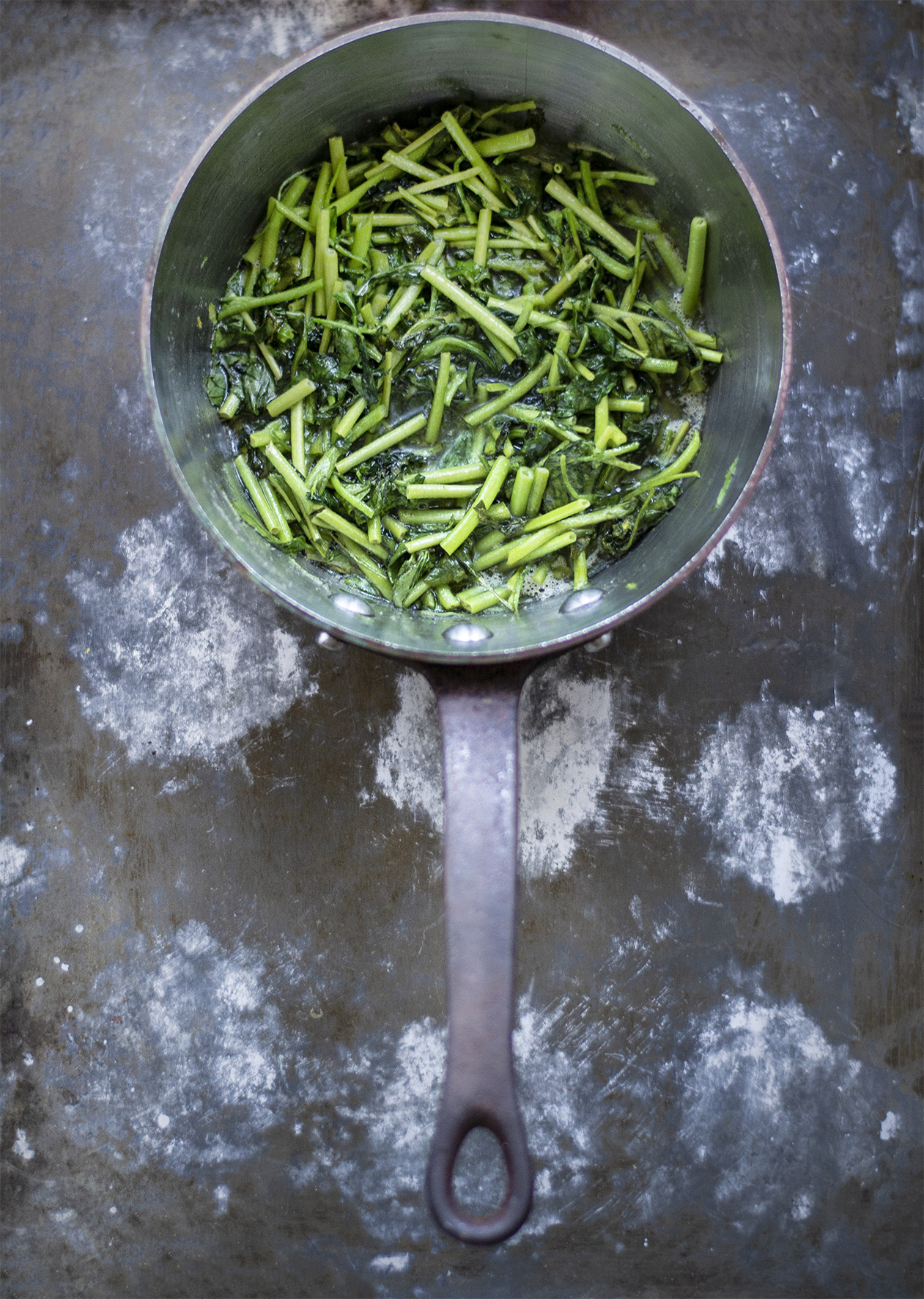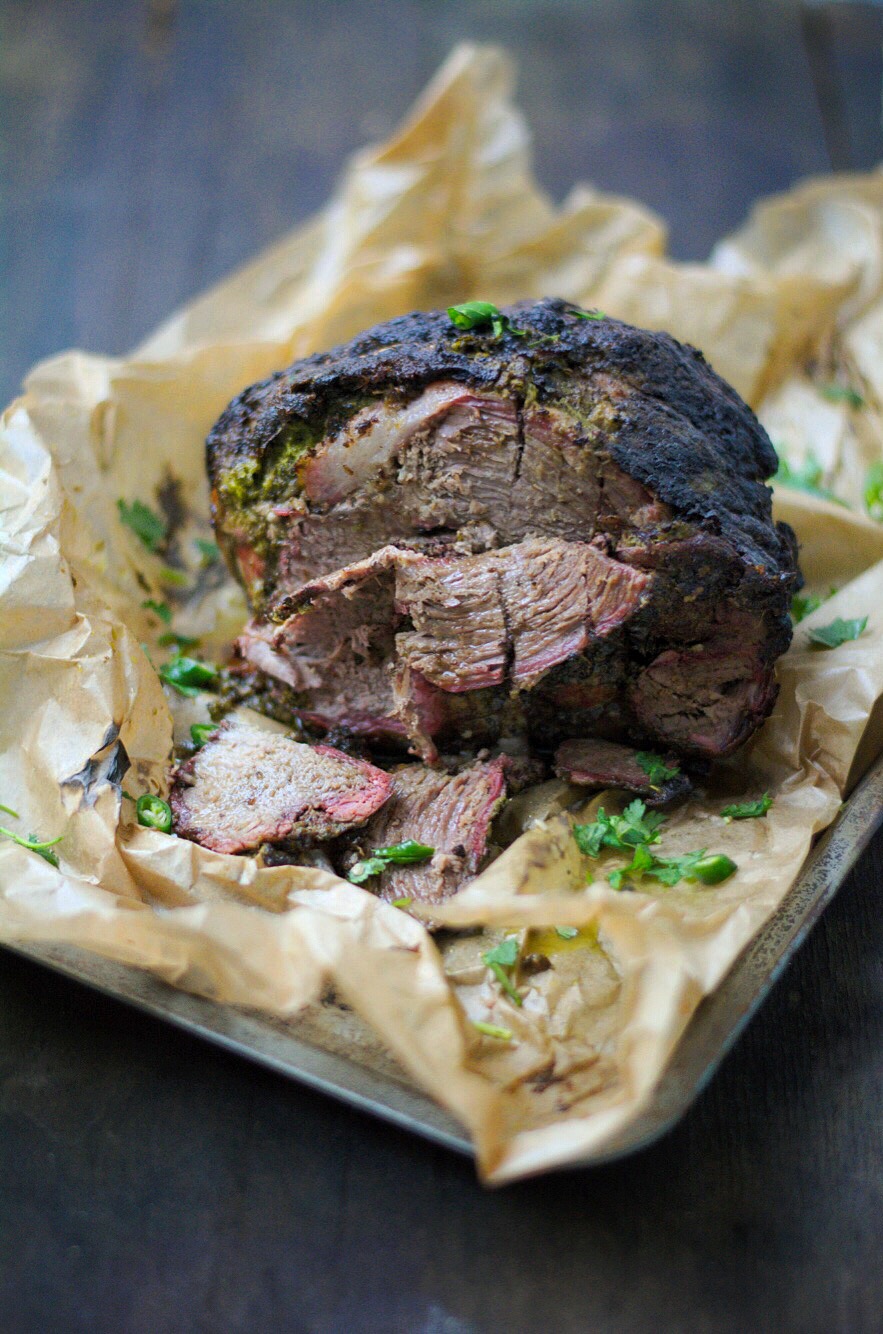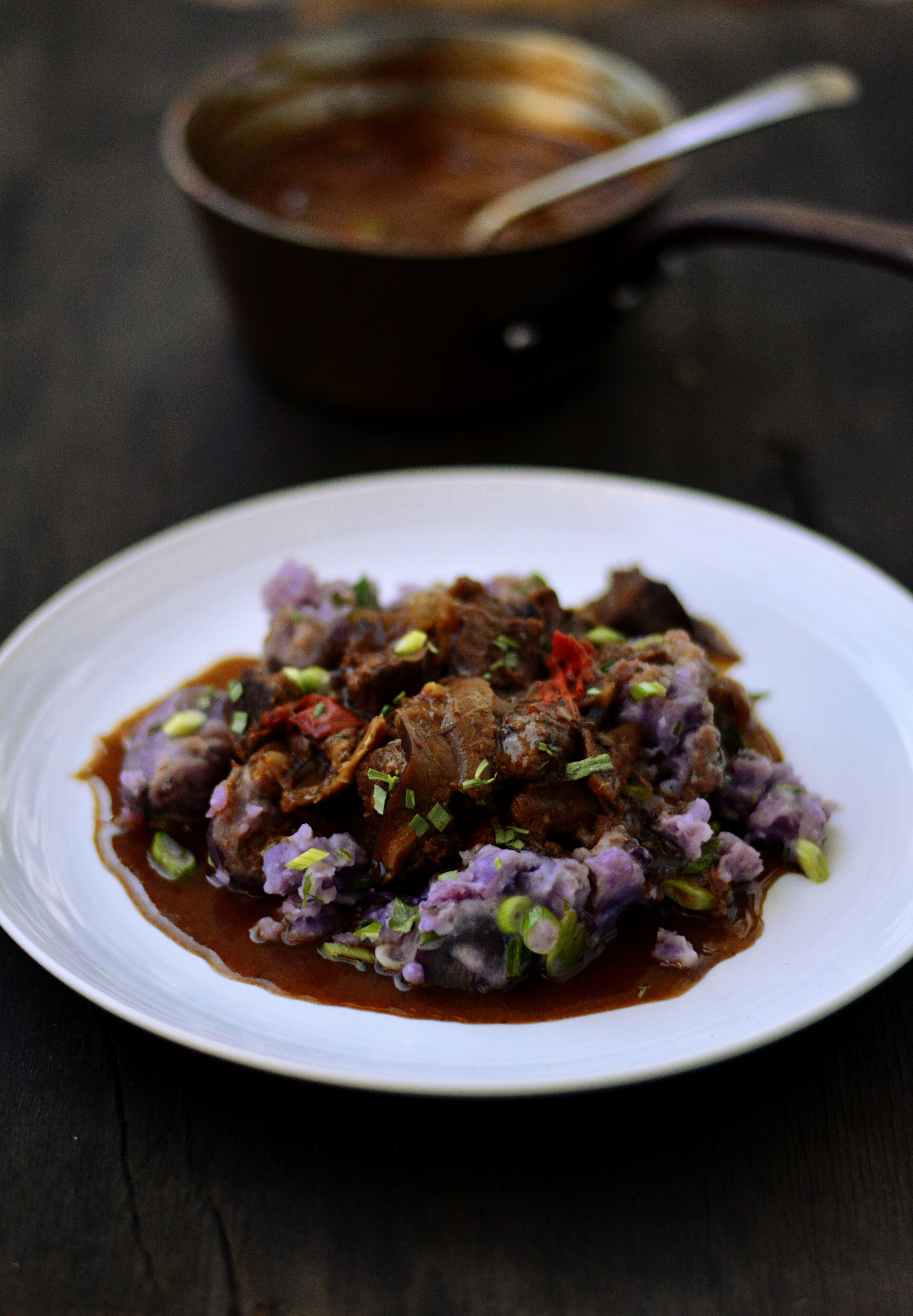
Cooking simply doesn't have to be cooking boringly. A fresh piece of wild fish or some high-season asparagus doesn't need much doing to it. Meals like this are quite often the best, in terms of flavour, sustainability and time. Vegetables at their freshest and most seasonal take almost no time to cook and with something like a flavoured butter or herb oil to complement them you are going to eat very well.
You can make many of these things in advance, butter freezes well to use as and when you like; spice mixes; freshly toasted and ground, will keep well in a jar in the cupboard for a couple of weeks to sprinkle over a finished dish. Try this gunpowder recipe for roast squash or this za'atar one to add to stems of tender broccoli or to sprinkle over.
Flavoured butters are one of my favourite way to add flavour and excitement to a dish and -- contrary to the advice given by the idiots in charge of dietary 'guidelines'-- it is good for you. Why on earth you would substitute a natural and delicious ingredient for an industrially produced trans-fat laden 'spread' which is one step away from plastic is beyond me.
Last week I made a batch with wild garlic as well as a harissa-laden one. I used them liberally to cook salmon, melt into a butter bean and chorizo stew and pour over fried eggs. This version, using a bunch of fresh fenugreek leaves (I threw the stalks into the blender too) is an elegant pale jade colour. Its maiden voyage is going to be with cauliflower, the florets first boiled until just starting to soften, next a coating of turmeric powder and mustard seeds, then caramelised in a pan and poached in the butter until ready.
Ingredients
250g softened unsalted butter (homemade from pasture-raised cows milk would be best, but failing that, Yeo Valley butter is a good supermarket one, if you must use those vile warehouses of sugar, food-type products and palm oil)
5g Maldon salt
1 bunch of fenugreek, well chopped
1tbsp extra virgin olive oil
Method
Melt 25g of the butter with the olive oil and add the salt. Throw in the fenugreek and stir well. Cook for about five minutes, until everything is well wilted then remove from the heat and leave to infuse for half an hour.
If at the end of the infusion the butter has started to solidify again, gently heat it.
Strain the mixture through a sieve into a large bowl, discarding the leaves then add the remaining butter and whisk well until it all comes together.
Pour into a jar or dish and chill until firm.



 The slow change from vivid green to red, yellow, orange. And then how quickly the trees become bare and the glorious colours give way to brown and grey sludgy streets.In the seemingly few hours of daylight we have over the winter months we celebrate the warmth of the fireside. Scarves, gloves, hats and thick woolen jumpers wrapped around us keep us cosy when we venture outside, often leaving and returning home in the dark.I welcome the smells from the slow cooker more than any dog's wagging tail as a greeting. And here we are, only at the gentle tip of the cold months, yet it feels like it's the time for stews. Meat falling from bones into rich and thick broths, individual flavours combining like the instruments in an orchestra to create one symphony.A cast-iron pan with a lid in a very low oven does just as well as a slow cooker, and if you're happy leaving the oven on all day it's the perfect way to cook. However, you may not fancy chopping and browning chunks of meat while drinking your morning coffee and wondering why you have to ask the children twenty times to put a sock on. I have neither the time nor inclination, getting out of a warm bed is tragedy enough. In which case these are best done the night before, or on a weekend when you have a more leisurely start to the day.Of course white potatoes work just as well as the purple ones, which may be a little tricky to find; crushed Anyas would be a real treat. Whatever you use, nothing quite beats the deliciousness of all those juices soaked up by the buttery potatoes. This really is one of those meals that feels like you're back home in the warmth of the family.Tarragon adds a little last of the summer sparkle to the flavours, hinting with its warm aniseed at the comfort to come. If you don't have any, a good handful of chopped parsley running through would be just as nice.Ingredients500g ox cheek, cut into chunks1 onion, roughly choppedA thumb of ginger, chopped1tbsp oregano1tbsp flour1/2 a bulb of garlic1 red pepper, chopped2tbsp tomato purée500ml beef stockLarge pinch of dried mushroomsSalt and pepperPotatoes to serve, cooked and crushed with butter, spring onion and some shredded tarragon.MethodHeat a heavy sauté pan with some oil and sear the beef well until browned. Try not to smoke out the kitchen and set of the smoke alarms in a panicked succession as I did. And sear the meat in batches to avoid boiling rather than caramelising it.Add the flour and stir well, coating all the meat. This will help thicken the sauce. Add to the slow cooker or casserole. Deglaze the sauté pan with a little water or wine and add the juices along with the remaining ingredients.Cook on high for four hours or low for eight hours in the slow cooker, or eight hours in a very low oven. (140c. Gas mark 1) Serve with the potatoes and perhaps some broccoli or garlic green beans.
The slow change from vivid green to red, yellow, orange. And then how quickly the trees become bare and the glorious colours give way to brown and grey sludgy streets.In the seemingly few hours of daylight we have over the winter months we celebrate the warmth of the fireside. Scarves, gloves, hats and thick woolen jumpers wrapped around us keep us cosy when we venture outside, often leaving and returning home in the dark.I welcome the smells from the slow cooker more than any dog's wagging tail as a greeting. And here we are, only at the gentle tip of the cold months, yet it feels like it's the time for stews. Meat falling from bones into rich and thick broths, individual flavours combining like the instruments in an orchestra to create one symphony.A cast-iron pan with a lid in a very low oven does just as well as a slow cooker, and if you're happy leaving the oven on all day it's the perfect way to cook. However, you may not fancy chopping and browning chunks of meat while drinking your morning coffee and wondering why you have to ask the children twenty times to put a sock on. I have neither the time nor inclination, getting out of a warm bed is tragedy enough. In which case these are best done the night before, or on a weekend when you have a more leisurely start to the day.Of course white potatoes work just as well as the purple ones, which may be a little tricky to find; crushed Anyas would be a real treat. Whatever you use, nothing quite beats the deliciousness of all those juices soaked up by the buttery potatoes. This really is one of those meals that feels like you're back home in the warmth of the family.Tarragon adds a little last of the summer sparkle to the flavours, hinting with its warm aniseed at the comfort to come. If you don't have any, a good handful of chopped parsley running through would be just as nice.Ingredients500g ox cheek, cut into chunks1 onion, roughly choppedA thumb of ginger, chopped1tbsp oregano1tbsp flour1/2 a bulb of garlic1 red pepper, chopped2tbsp tomato purée500ml beef stockLarge pinch of dried mushroomsSalt and pepperPotatoes to serve, cooked and crushed with butter, spring onion and some shredded tarragon.MethodHeat a heavy sauté pan with some oil and sear the beef well until browned. Try not to smoke out the kitchen and set of the smoke alarms in a panicked succession as I did. And sear the meat in batches to avoid boiling rather than caramelising it.Add the flour and stir well, coating all the meat. This will help thicken the sauce. Add to the slow cooker or casserole. Deglaze the sauté pan with a little water or wine and add the juices along with the remaining ingredients.Cook on high for four hours or low for eight hours in the slow cooker, or eight hours in a very low oven. (140c. Gas mark 1) Serve with the potatoes and perhaps some broccoli or garlic green beans.